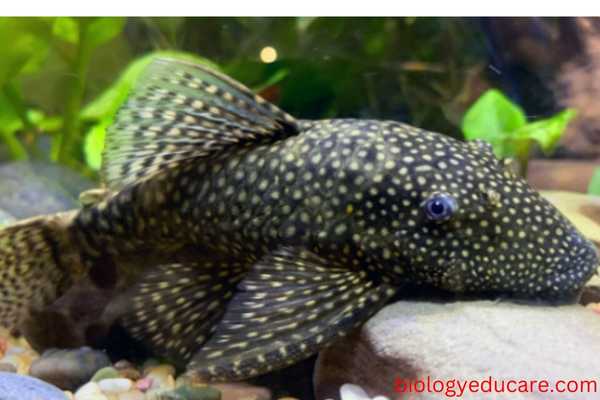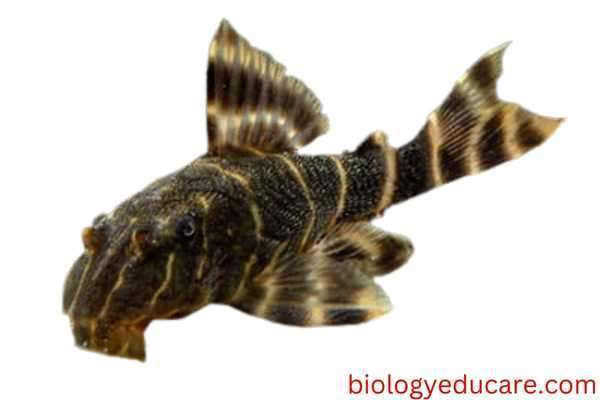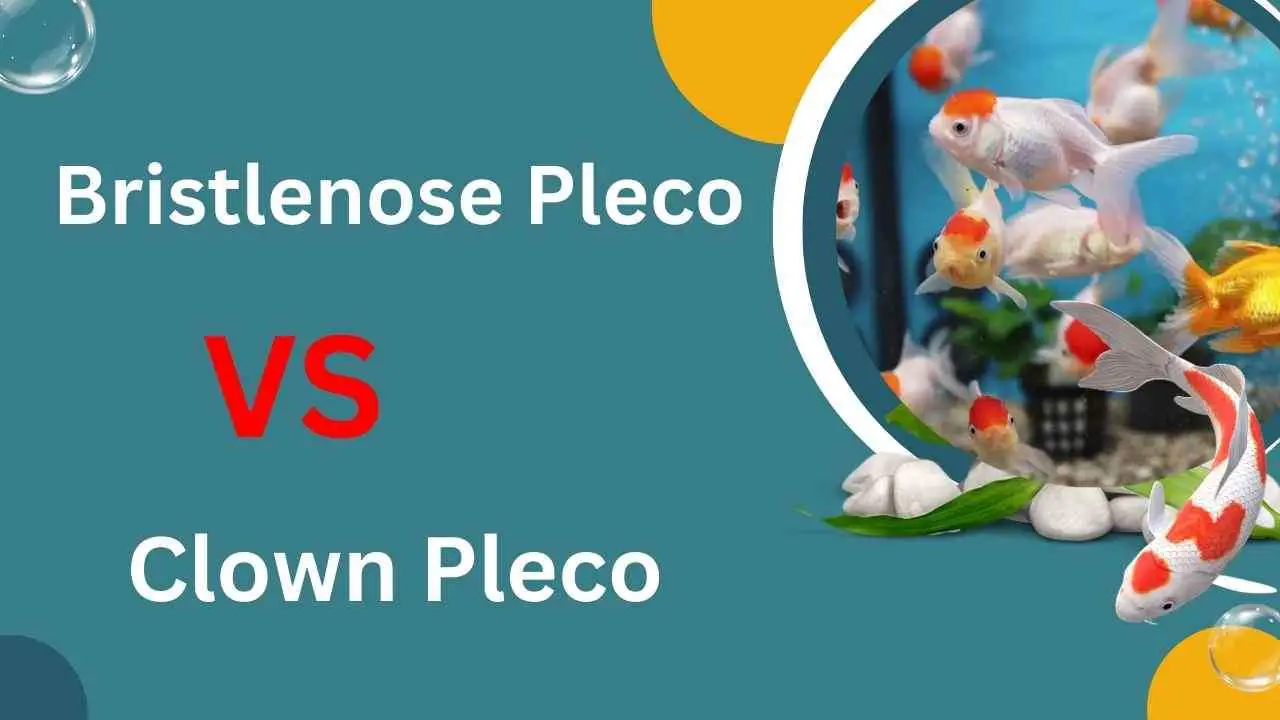Bristlenose Plecos and Clown Plecos are both popular species of fish that are commonly kept in aquariums. Both fish belong to the family Loricariidae, which is a group of freshwater fish that are commonly referred to as plecos or plecostomus. In this article, we will compare these two species of fish (Bristlenose Plecos vs Clown Plecos) in terms of their physical characteristics, tank requirements, diet and feeding, behavior and temperament, health and disease, and breeding.
Overview of Bristlenose Pleco
Bristlenose Plecos, also known as the bushy nose, Bushy Nose Pleco or Bristlenose Catfish. They are known for their distinctive “bristles” or tentacles on their nose. They are hardy, peaceful fish that are easy to care for and are often used as “cleanup crew” in aquariums.
Systematic Position
Phylum: Chordata
Subphylum: Vertebrata
Class: Actinopterygii
Order: Siluriformes
Family: Loricariidae
Genus: Ancistrus
Species: Ancistrus cirrhosus
Body Shape and Coloration
Bristlenose Plecos have a brown or gray coloration and are covered in small spots or blotches. They have a distinctive set of “bristles” or tentacles on their nose that gives them their common name. These fish have a relatively flat body shape and a wide, downturned mouth.

Size and Growth
Bristlenose Plecos are a smaller species of pleco that can reach a maximum size of around 5 inches in length (4-5 inches:10-13 cm). They typically reach maturity at around 2-3 inches in length and continue to grow slowly throughout their lifespan. They can live up to 10 years or more if you provide suitable habitat.
Tank Requirements
Bristlenose Pleco can adapt to a wide range of water conditions. They are best kept in a tank that is at least 30 gallons in size and can thrive in a variety of water temperatures, pH levels, and hardness levels. They also require plenty of hiding spots, such as caves, driftwood, and plants.
Feeding
Bristlenose Plecos are omnivores and will eat a variety of foods, including algae, vegetables, and commercial pellets. They are known for their ability to consume large amounts of algae, making them a valuable addition to a clean-up crew in an aquarium. They can also be fed with sinking pellets, algae wafers, blanched vegetables, and fruits such as cucumber, lettuce, or zucchini.
Behavior and Temperament
Bristlenose Plecos are known for their peaceful and docile nature. They are a great addition to community tanks and do well with other fish species. They are also active during the night and spend most of the day hiding in caves, under rocks, or in other hiding spots. They are also less active during the day, and spend most of their time hiding, usually in caves, behind rocks, or other similar structures.
Tankmates
Bristlenose Plecos are peaceful and can be kept with a wide variety of fish species, including other peaceful fish such as tetras, rasboras, and guppies. They can also be kept with other peaceful bottom-dwellers such as Corydoras and Otocinclus catfish. They are also compatible with larger fish such as angelfish and discus, as long as they have enough space and hiding spots.
Sexing
Sexing Bristlenose Plecos can be difficult, especially when they are young. However, as they mature, certain physical characteristics can be used to distinguish males from females. Males will develop fleshy tentacles on their snout, which are known as “bristles.” These bristles are used in courtship and territorial displays and are not present in females. Additionally, males will be generally larger and more robust than females, and their dorsal fin will be more pointed.
Breeding
Bristlenose Plecos are known to breed readily in captivity, and they will lay their eggs on flat surfaces such as rocks or pieces of wood. The male will then guard the eggs until they hatch, which usually takes around 7-10 days. The fry is relatively large and can be fed on newly hatched brine shrimp or crushed flake food.
During the breeding period, you should provide the suitable breeding pair with a suitable spawning site, such as a flat rock or piece of wood, and ensure that the water conditions are optimal. The temperature should be between 24-26 °C (75-79 °F) and the pH should be between 6.5-7.5. The water should be well-oxygenated, and the tank should be dimly lit.
Overview of Clown Plecos
Clown pleco is also known as clown panaque, clown plecostomus, or ringlet pleco. It is a freshwater fish that belong to the Loricaridae family under the order Siluriformes of Class Actinopterygii. It has a catfish-like appearance with striking colors give the fish popular among the aquarist community.
Systematic Position
Phylum: Chordata
Subphylum: Vertebrata
Class: Actinopterygii
Order: Siluriformes
Family: Loricariidae
Genus: Panaqolus
Species: Panaqolus maccus
Body Shale and Coloration
Clown Plecos have a more striking coloration. They have a black or dark brown body with white or cream-colored spots, stripes, or blotches. They have a more streamlined body shape and a smaller mouth than the bristlenose plecos. They also have a more pointed snout, and their fins are more elongated than Bristlenose plecos.
Size and Growth
Clown Plecos are a larger species of pleco that can reach a maximum size of around 4 inches in length(3.5 to 4 inches: 8.75 – 10cm). They typically reach maturity at 2 to 3 years and continue to grow throughout their lifespan. They can live about 10-12 years.

Tank Requirements
Clown Plecos have more specific tank requirements. They require a larger tank with a minimum size of 50 gallons, as they can grow to a maximum size of 12 inches. They prefer a water temperature between 72-78°F, a pH level of 6.5-7.5, and a hardness level of 10-15 dGH. They also require plenty of hiding spots, such as caves and driftwood, as well as a varied diet.
Feeding
Clown Plecos, on the other hand, are also omnivores but have a more varied diet than Bristlenose Plecos. They will eat algae, but also require a diet that includes proteins such as worms, crickets, or shrimp. They should be fed a variety of foods such as algae wafers, frozen or live foods, and fruits and vegetables to ensure that they receive all the necessary nutrients.
Behavior and Temperament
Clown Plecos, on the other hand, are known for their more active behavior. They are also peaceful but can be more territorial than Bristlenose Plecos. They are also active during the night and spend most of the day hiding in caves, under rocks, or in other hiding spots. They also require more swimming space than Bristlenose Plecos and may become stressed in tanks that are too small.
Tankmates
Clown Plecos are also peaceful but can be more territorial, so it’s important to provide them with plenty of hiding spots and swimming space. They can be kept with other peaceful fish such as tetras, rasboras, and guppies. They can also be kept with other peaceful bottom-dwellers such as Corydoras and Otocinclus catfish. They are also compatible with larger fish such as angelfish and discus, as long as they have enough space and hiding spots. It is not recommended to keep them with other plecos as they may become territorial.
Sexing
Sexing Clown Plecos can also be difficult, especially when they are young. However, as they mature, certain physical characteristics can be used to distinguish males from females. Males will also be generally larger and more robust than females, and their dorsal fin will be more pointed. They will also develop a more pronounced hump on their head, which is more prominent in males than in females. Additionally, the anal fin of males will be more elongated and pointed than that of females.
Breeding
Clown Plecos are less likely to breed in captivity and require specific conditions to breed. They will lay their eggs on flat surfaces such as rocks or pieces of wood, but unlike the Bristlenose Plecos, the clown plecos eggs are smaller and the fry are harder to raise. They will require more attention and a specific diet such as live food to survive.
To make breeding successful, you should provide the suitable breeding pair with a suitable spawning site, such as a flat rock or piece of wood, and ensure that the water conditions are optimal. The temperature should be between 24-26 °C (75-79 °F) and the pH should be between 6.5-7.5. The water should be well-oxygenated, and the tank should be dimly lit.
Some Suitable Comparison Between Bristlenose Pleco and Clown Pleco
Here’s a comparison table between Bristlenose Plecos and Clown Plecos:
| Characteristics | Bristlenose Pleco | Clown Pleco |
|---|---|---|
| Size | 4-5 inches (10-13 cm) | 3.5 to 4 inches (8.75 – 10cm) |
| Coloration | Brown or black with white or yellow spots | Dark brown with white stripes |
| Temperament | Generally peaceful | Generally peaceful |
| Tank Requirements | Minimum 30 gallons, planted with hiding places | Minimum 20 gallons, with plenty of hiding places and driftwood |
| Diet | Omnivorous, eats algae and other debris, and accepts pellets and vegetables | Omnivorous, eats algae and other debris, and accepts pellets and vegetables |
| Breeding | Relatively easy to breed in captivity | Less likely to breed in captivity |
| Other characteristics | Develops bristles on snout; helps keep tanks clean | Develops a hump on head; known for beautiful coloration |
| Lifespan | 5-10 years | 10-12 years |
Disease and Treatment of Brislenose Plecos and Clown Plecos
Like all fish, Bristlenose Plecos and Clown Plecos are susceptible to certain health issues and diseases. It’s important to provide them with a healthy and clean environment and to be aware of the signs of illness so that you can address any issues quickly.
Some common health issues that can affect Bristlenose Plecos and Clown Plecos include:
Ich: It is also known as “white spot disease,” ich is caused by a parasite and is characterized by small white spots on the fish’s body. It can be treated with a variety of medications, including copper-based treatments and formalin-based treatments.
Fin rot: This is a bacterial infection that causes the fins of the fish to become frayed and discolored. It can be caused by poor water conditions and can be treated with antibiotics.
Swim bladder disorder: This is a condition in which the fish’s swim bladder becomes inflamed or infected, making it difficult for the fish to swim or stay afloat. It can be caused by poor diet or constipation and can be treated with a change in diet or medication.
Parasites: Both species of plecos are prone to parasites, such as flukes and worms. These can be treated with a variety of medications, including medicated food or dips
Which Species Is a Better Choice for Your Aquarium
Both Bristlenose Plecos and Clown Plecos are suitable choices for aquariums, but they have different characteristics and requirements.
Bristlenose Plecos are considered to be a hardy and adaptable species, and they are relatively easy to breed in captivity. They are known for their ability to help keep tanks clean by eating algae and other debris, and they are generally peaceful and easy to care for.
Clown Plecos, on the other hand, are considered to be a more delicate species, they are less likely to breed in captivity and they are harder to raise their fry. They are known for their beautiful coloration, which makes them a popular choice among fish keepers.
Both species of plecos are compatible with a wide range of tankmates, and they can be kept with other fish, as well as with shrimp, snails, and other invertebrates.
As a whole, the best choice for your aquarium will depend on your personal preferences and the specific requirements of your tank. If you are looking for a hardy and adaptable species that is easy to breed in captivity, then Bristlenose Plecos might be a better choice for you. If you are looking for a fish with more beautiful coloration, then Clown Plecos might be a better choice for you.
Conclusion
In conclusion, both Bristlenose Plecos and Clown Plecos are suitable choices for aquariums. Bristlenose Plecos are considered to be a hardy and adaptable species, relatively easy to breed in captivity, and known for their ability to help keep tanks clean by eating algae and other debris. On the other hand, Clown Plecos are considered to be a more delicate species, less likely to breed in captivity, and harder to raise their fry. They are known for their beautiful coloration, which makes them a popular choice among fish keepers. Ultimately, the best choice for your aquarium will depend on your personal preferences and the specific requirements of your tank.

